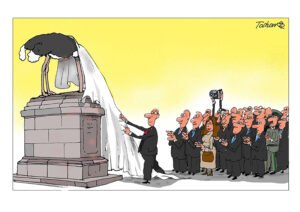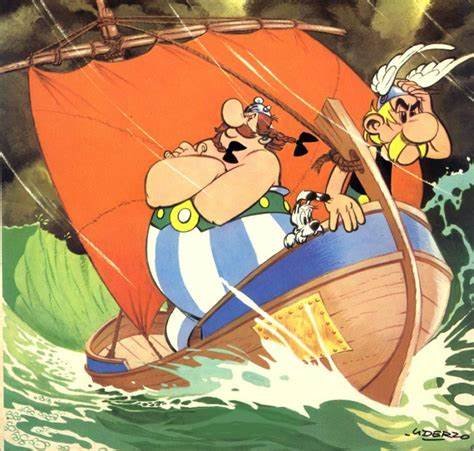Political cartoons are a powerful way to comment on important issues, using humor, satire, and exaggeration to make a point. However, cultural differences in political cartooning can greatly influence how cartoons are created and understood around the world. What might be funny or meaningful in one country may not be well understood in another. In this article, we will explore how cultural backgrounds affect political cartoons and how different societies use humor and symbolism to reflect their political landscapes.
1. Humor and Satire in Different Cultures
One of the most noticeable cultural differences in political cartooning is the type of humor used. Humor is subjective, and what one culture finds funny, another might find offensive or confusing. For example, in the United States, political cartoons often use sarcasm and exaggeration to make a point. Characters like politicians are frequently depicted in over-the-top, humorous ways, such as with large noses or absurd expressions, to emphasize their flaws.
In contrast, political cartoons in Japan often use more subtle humor, relying on minimalism and simplicity. They may not always rely on direct sarcasm or exaggeration, but rather use symbols and smaller gestures to make their point. The subtlety in Japanese cartoons reflects a culture that values restraint and politeness, which can make these cartoons harder to understand for those not familiar with Japanese culture.

2. Symbolism and Cultural Context
Cultural differences in political cartooning also affect the use of symbols. Symbols can carry different meanings depending on cultural context. For instance, an eagle is a common symbol in American political cartoons, representing freedom or strength. But the same symbol might not have the same impact in a country like China, where the dragon might be used more frequently as a symbol of power and respect.
In many Western cartoons, you may see the Statue of Liberty used to symbolize freedom, democracy, and justice. However, in countries with different political histories, symbols of liberty may differ. For example, in some African countries, the dove may symbolize peace, while in Middle Eastern cartoons, the olive branch might be more common to represent peace or reconciliation.
Understanding these cultural differences in political cartooning is essential because it shows how the same issue can be portrayed in various ways depending on cultural values and traditions. What might seem like a simple image to one person could carry a much deeper or different meaning in another culture.
3. Different Political Environments
The political climate of a country also plays a huge role in shaping its cartoons. In countries with strict censorship laws, such as in China or Russia, political cartoons often need to be more subtle and indirect. Cartoonists in these countries must be cautious about how they criticize the government or political leaders, so they use coded messages or hidden symbols to avoid punishment.
On the other hand, in countries with more freedom of speech, like in many Western nations, political cartoonists are often more open in their criticisms. They can freely depict politicians and public figures in an exaggerated or negative light. This openness allows for more direct and often bolder messages, but also requires a certain level of understanding from the audience.
Cultural differences in political cartooning in these environments show how political systems influence the type of cartoons that are created. While freedom of expression allows for a broader range of satire, restrictions can force cartoonists to become more creative and indirect in their messaging.
4. Depiction of Gender and Race
Another key area where cultural differences in political cartooning come into play is in the depiction of gender and race. In some cultures, there may be a tendency to portray women in traditional roles, while in others, women may be represented as strong and active political figures. For example, in the United States, women have been depicted in political cartoons both as empowered leaders and as stereotypical figures, depending on the political context.
Similarly, race plays an important role in political cartoons. In countries with diverse populations, cartoonists may address racial issues more directly. However, in more homogeneous societies, race might be less of a focus in cartoons. Cultural norms about race and ethnicity can shape how certain groups are portrayed, which can vary greatly from one culture to another.
Understanding these differences helps us see how cultural differences in political cartooning can reflect broader social attitudes and issues in each country. These differences are not only about humor and politics, but also about the cultural values and challenges of society.
5. The Global Influence of Cartoons
While cultural differences in political cartooning exist, globalization has made it easier for political cartoons to spread across borders. Thanks to the internet and social media, cartoons from one country can quickly reach audiences around the world. This has led to a blending of different cartooning styles, with cartoonists sometimes adopting international symbols or approaches in their work.
However, this also means that political cartoons can be misunderstood when they cross cultural lines. For example, a cartoon that is very effective in one country may not have the same impact in another, especially if the symbols or humor do not translate well. As a result, cartoonists must be aware of their audience when creating political cartoons that are meant for global distribution.
6. The Role of Political Cartoonists
Despite the cultural differences in political cartooning, the role of cartoonists remains largely the same: to comment on and criticize political and social issues. Whether through humor, satire, or symbolism, political cartoons help people think critically about the world around them. They can break down complex issues and provide a new perspective.
Even with cultural differences, the universal appeal of political cartoons is evident. They allow people from different backgrounds to connect over shared political experiences, even if they interpret the messages in different ways. Cartoonists may adapt their style to fit their culture, but their ultimate goal remains the same: to make people think, laugh, and sometimes even act.
Conclusion
Cultural differences in political cartooning show how cartoons are shaped by their surroundings. From humor and symbolism to the political climate, culture influences how cartoons communicate their messages. Understanding these differences helps us appreciate the unique ways political cartoons reflect the world’s diversity.











